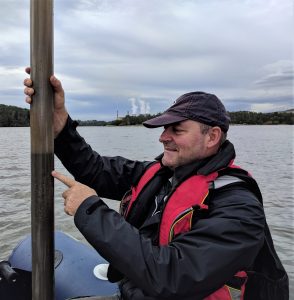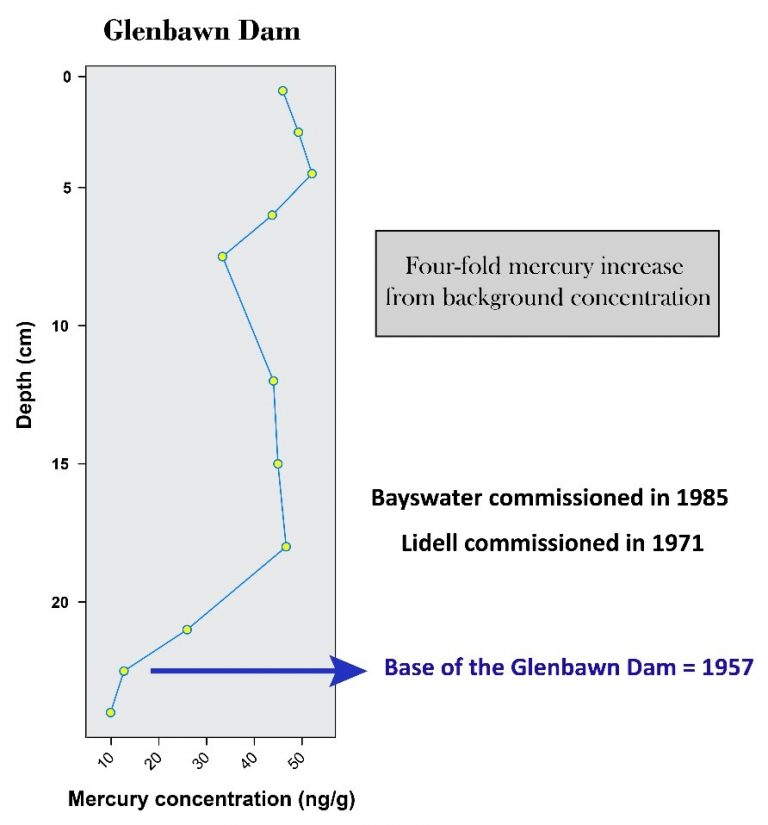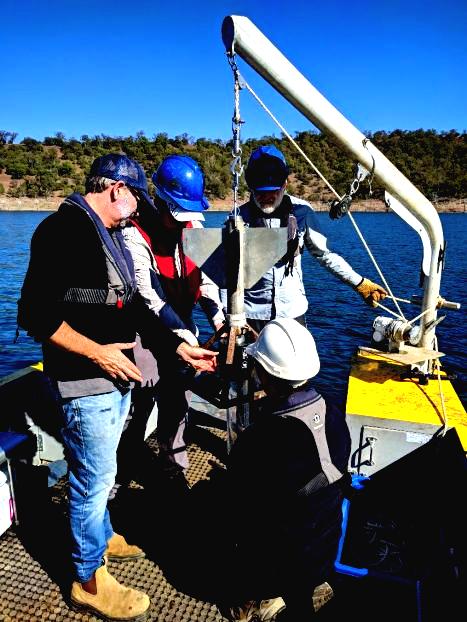From wine tasting to magnificent recreational activities, the Hunter Valley region in Australia is known for its beautiful landscapes. In the centre of this iconic region, coal mining and power stations are changing the environmental status of the landscape.
The Mercury Australia team is currently investigating temporal changes in environmental concentrationsls of mercury due to anthropogenic emissions (Figure 1). This is critical given Australia has one of the oldest and least efficient fleets of coal-fired power stations in the world. For local communities, that means exposure to mercury and other toxic substances. These pollutants contribute to serious health impacts, including asthma, respiratory disease and premature death.

The Hunter Valley is the site of two coal-fired power stations: Bayswater and Liddell. Together, these two power stations are responsible for 46% of the total coal-fired electricity capacity in the state of New South Wales. In addition, the Hunter Valley contains one of the largest coal reserves and coal mining operations in Australia. Researchers and students from The Australian National University, The University of Canberra and University of New South Wales (Figure 1), are building a database to quantify increases in atmospheric mercury fluxes.
Using evidence from historical sedimentation mercury levels, this database would also be able to measure amounts of mercury emitted from coal-fired power stations in NSW. This is timely given that Australia has signed (and is anticipated to ratify) the Minamata Convention to reduce global Hg emissions (which came into force in August 2017).

The use of coal in thermal power plants is one of the major sources of mercury in the environment. After being emitted, mercury can travel and reside in the atmosphere for up to one year until it is is deposited into a range of ecosystems, including lakes. This makes lakes useful indicators of mercury contamination as they contain a historical record of metals in the surrounding environment. These records enable reconstruction of natural histories of metal pollution which is especially useful in areas where there are no other forms of monitoring of environmental contaminants (Figure 2).
Mercury and other metals can enter lakes in at least two ways: (1) atmospheric transport with deposition directly into the lake (2) via inputs of contaminants either through runoff from catchment soils or surfaces (Figure 3). Contaminants that become strongly bound to particles may then be trapped in lakes where sediments tend to settle. Provided there is little sediment mixing or post-deposition mobility, sediments can provide a reliable history of contaminant burdens to the lake (Figure 3). Often, the source of the contaminant can be inferred by comparing the date of contaminant appearance and a known date of discharge as seen in a core. Information can also be derived from the isotopic composition of the chemical.

The first phase of this study is to investigate if these two power stations have increased natural mercury concentration in the environment. In this context, we collected sediment cores from Glenbawn Dam, a reservoir dam 30 km North of Liddell and Bayswater Power Stations. This dam was constructed in 1957, before Liddell and Bayswater coal-fired power stations were commissioned. These conditions enable us to measure mercury concentrations prior to the time power stations were commissioned. Establishing the background concentrations is an important step to ensure there is sufficient data to compare with standard reference values of modern mercury concentrations..
Our pilot results have shown that mercury has increased four-fold since the construction of Glenbawn Dam in 1957 (Figure 4). The Mercury Australia team is currently dating the layers of sediments using Pb-210 techniques to establish with precision the exact year mercury concentrations have started increasing.

Now that we have identified a significant increase in mercury within the vicinity of Hunter Valley power stations, researchers are expanding this study to several lakes in Australia. This wider investigation aims to understand the spatial distribution of mercury contamination. In addition, researchers are conducting mercury isotope analyses to distinguish the origin of Hg in sediments.
The results of this study will support power stations to better understand their historical mercury emission and to comply with the requirements of the Minamata Convention once Australia ratifies this international treaty on mercury emissions. The results of this study also reinforce the need for the Australian government to ratify and implement the Minamata Convention.
Larissa Schneider and Nicholas Metherall


Twitter